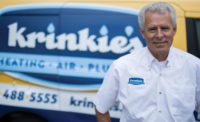Fast-food workers across the nation protested their salaries late in the fourth quarter of 2013 while HVACR contractors continued to search for skilled tradesmen or people who are willing to be trained in the trade. After discussing the employment situation with contractors from across the nation, it’s evident that much of the HVACR industry is looking for good people to fill the vacancies.
“We are struggling, as most are, to find candidates who want to learn from the grass roots and up,” explained Greg Crumpton, president and founder of AirTight, Charlotte, N.C. “Finding a drug-free, driver’s license-carrying, insurable, communicative person who wants to physically work hard is a challenge.”
His motivation to hire in the current market is the general growth of AirTight’s maintenance base, but Crumpton cautioned that the extra work it takes to find suitable employment candidates has a tendency to limit growth.
“We work to find them [suitable candidates], and we do, but this limits our growth,” he said. “We do not want to outsell our ability to serve at a very high level.”
Finding a Workforce
AirTight isn’t the only HVAC company searching for qualified candidates to provide high-quality installation and maintenance services to its customers. John Sigerson, field service representative, O’Connor Co. Inc., Omaha, Neb., and an independent wholesale distributor for Trane and American Standard, is also looking for qualified people.
“If I could produce 24 install techs and 24 service techs every three to four months, I could place them all with our dealers,” he said. “Business is good and we need good help.”
Travis Smith, owner of Sky Heating and Air Conditioning in Portland, Ore., noted that his company has been struggling to keep up with the workload for months because he cannot find enough qualified people or train people quickly enough for the quality of work that is expected.
“It is incredible how many people claim to be unemployed yet we can’t find help fast enough. We put an employment ad in the paper and are only getting a few people applying for $20-plus per hour jobs with full benefits and a company vehicle. I am lucky if even one of the applicants is qualified,” said Smith. “When we hire trainees, they often leave without notice because they don’t want to do this type of work. I talked to one plumber who hired over 80 people and only kept four of them because the other 76 were either less skilled than they claimed or just stopped showing up to work. We have hired 12 people in 2013 and had to let go of almost half of them, or they quit.”
Even though unemployment decreased from 7.3 to 7 percent in Nov. 2013, according to the jobs report released by the Bureau of Labor Statistics (BLS), unemployment numbers are still high. Other figures from the report show that the economy is continuing on a slow growth path. Temporary layoffs were decreased by 377,000, which the BLS attributes largely to the return to work of federal employees that were furloughed in the October 2013 partial government shutdown.
Nonfarm payroll employment rose by 203,000, with increases seen largely in the transportation and warehousing, health care, and manufacturing industries. However, the amount of men, women, and teenagers still looking for a job among the BLS’ major work groups were 6.7, 6.2, and 20.8 percent, respectively.
According to this information, there is a workforce to be had, but the problem is getting the unemployed individuals properly trained and prepared.
Fixing Technician Shortages
The question of attracting a quantity of qualified candidates to the HVAC trade is one that industry players have been working on for years. Eric Knaak, vice president of operations for Isaac Heating and Air Conditioning in Rochester, N.Y., said, “There are hundreds of thousands of jobs nationally that are unfilled and there are millions of people who are currently unemployed. Somewhere there has to be a disconnect.”
He went on to explain that those looking for careers might not consider HVAC because it does not have some of the flash and perks that other careers sometimes offer.
“Not every company can function like the Silicon Valley startups or the Fifth Avenue marketing firms with a plethora of fun things to do and off-the-wall ideas to keep people interested,” said Knaak. “We can, however, as an industry, move away from some of the traditional ways of thinking about how a company can be run and take some ideas from the best companies to work for in the country. While it can be dirty work, with long hours and minimal recognition, it does not need to be. We need to change the way that HVAC is viewed and start attracting some of that top talent.”
Fixes for the technician shortage can be found not only on the contractor and industry side, but also on the treatment of businesses via legislation and regulations.
“It would really help if we had a business-friendly government,” said Bob Keingstein, president, HVAC and plumbing division, Boss Facility Services Inc., Ronkonkoma, N.Y. “It appears that the government places roadblocks every chance it gets and this places excess burdens on small business.”
Other items that numerous contractors have acknowledged that need some attention include tax reform, an increase in U.S. manufacturing, less entitlement funding, less outsourcing, tax credits for training workers, and more hands-on technical education in school.
“Find out which ones are hungry to work and start training them,” suggested Sigerson. “I worked full time doing apartment maintenance while I went to school for HVACR. I was able to learn something in the morning and use it that afternoon on the job. I parlayed the skills I had for the skills I needed.”
Publication date: 1/20/2014
Want more HVAC industry news and information? Join The NEWS on Facebook, Twitter, and LinkedIn today!













